While Nik and I are on our second stint living in Barcelona, we wanted to try and take more trips within the country to visit new cities. An easy train ride from Barcelona is how we ended up spending two days visiting Zaragoza.
Why Zaragoza
Nik and I decided on visiting Zaragoza after reading this article where the author stayed in Zaragoza and in a town called Canfranc Estación in a hip new hotel built in a long-abandoned train station. This recap covers the first part of our take on a similar trip.
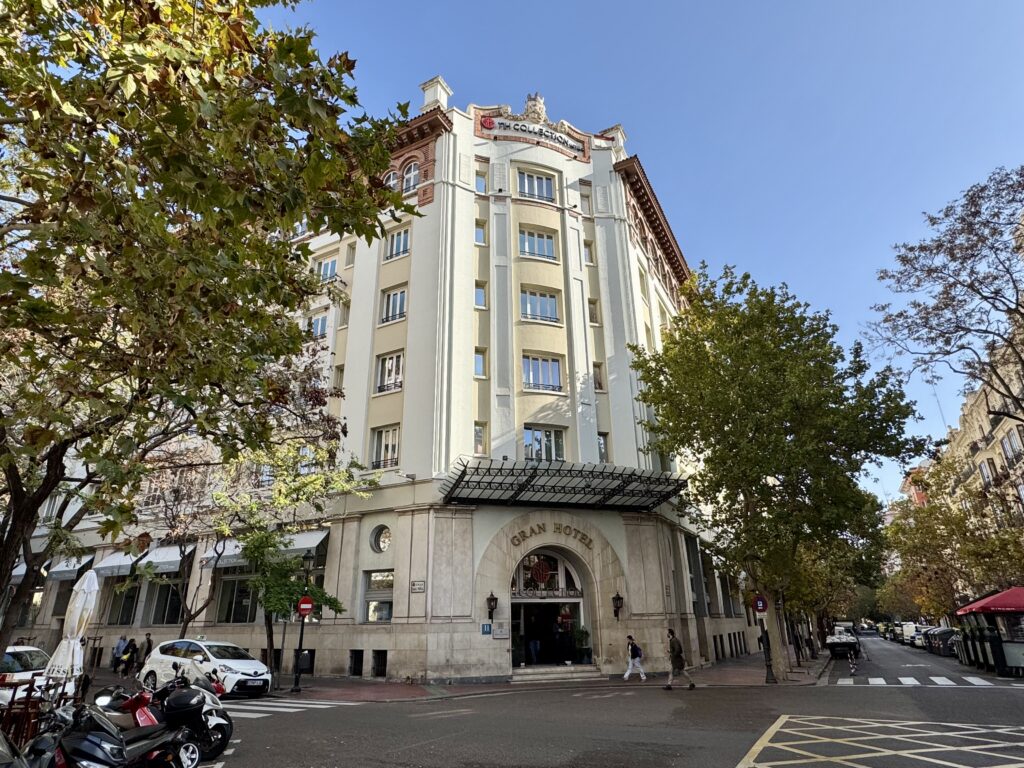
A quick and easy 90 minute train ride from Barcelona Sants train station took us to the Zaragoza-Delicias station. We grabbed a cab from the train station and got to NH Collection Gran Hotel de Zaragoza where we stayed while visiting Zaragoza. The hotel was nice enough, though our room felt a little tight. We opted for breakfast one morning there and it was ok. The restaurant was in the lower level and felt very much like a dungeon without windows or any view.
Sightseeing in Zaragoza
The location of our hotel was perfect for exploring. We’re big walkers on trips like this and it was a short walk to El Tubo, the heart of the city and very popular for tapas. (More on the food further below.)
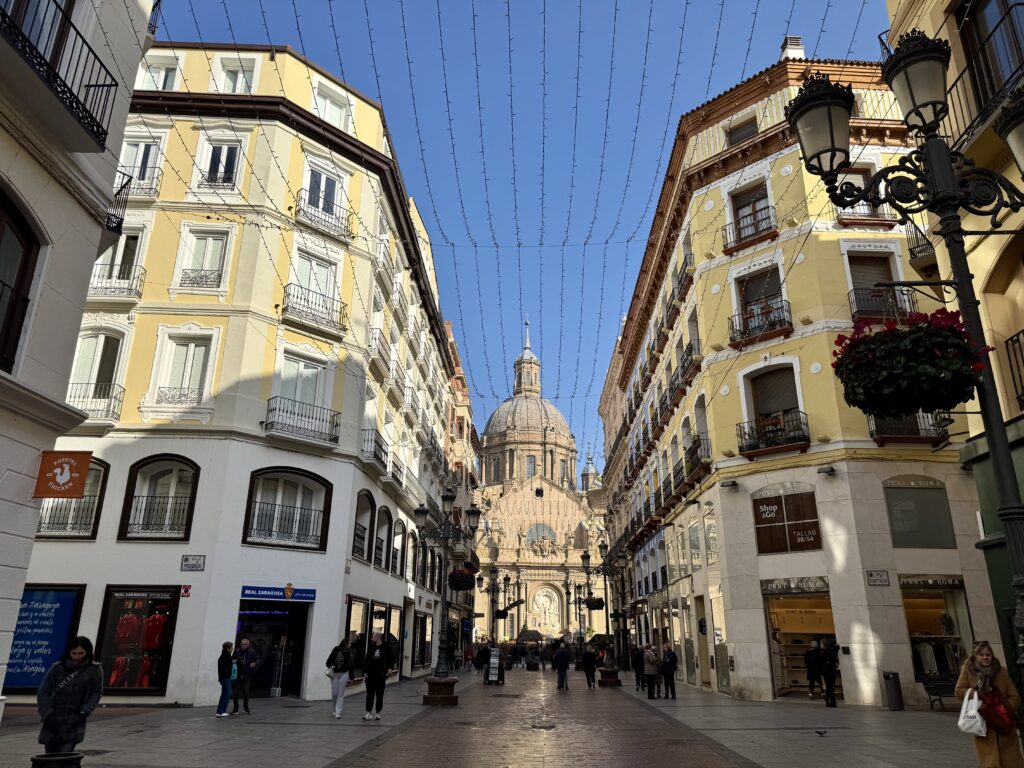
Zaragoza felt pretty small, especially the El Tubo area, so it was easy to see the main attractions of the city.
Teatro Romano de Zaragoza
The more we take trips around Europe, the more we realize just how old some of the cities are. Zaragoza is no different when you see The Roman Theater. It was built during the first half of the 1st century AD and when the city had a population of 18,000-20,000, the theater could hold 6,000 spectators.
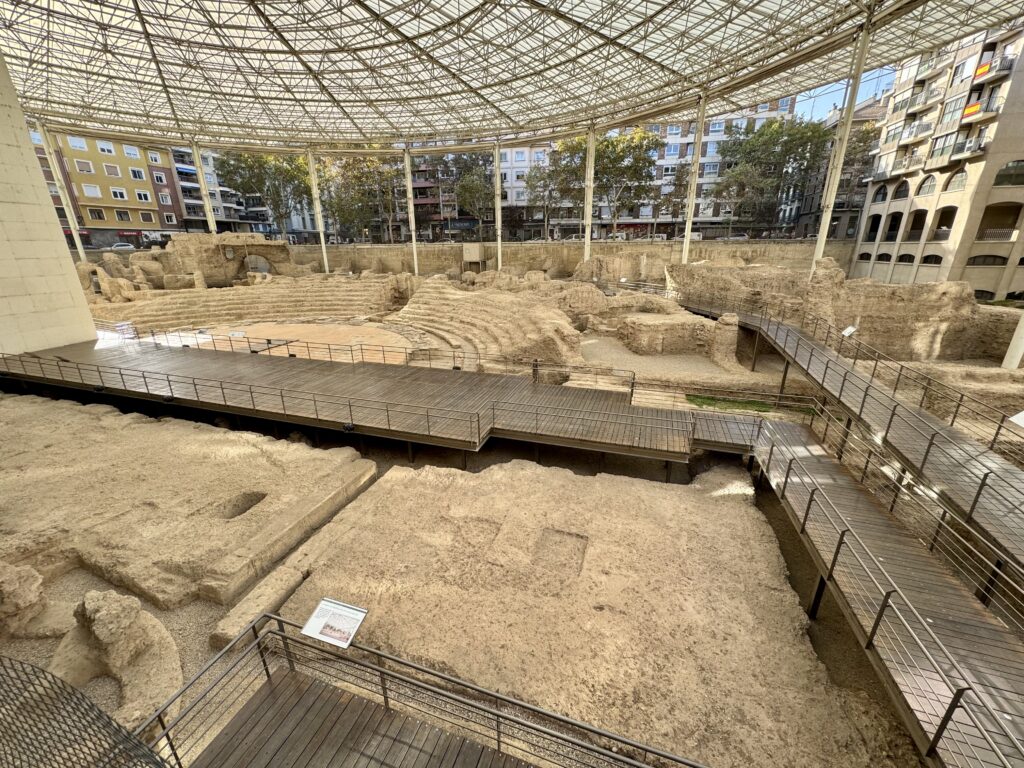
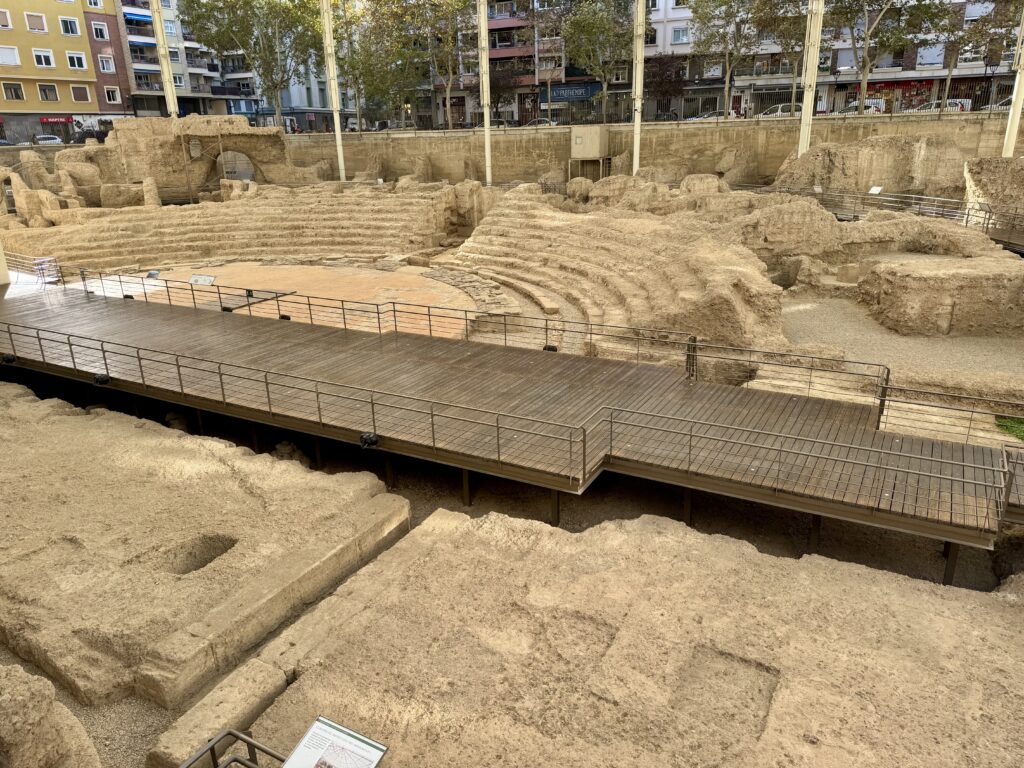
As you walk around the theater, it feels like it’s been plopped in the middle of a neighborhood. When really the neighborhood probably overtook the theater’s area since in 1973 archaeological excavations uncovered it.
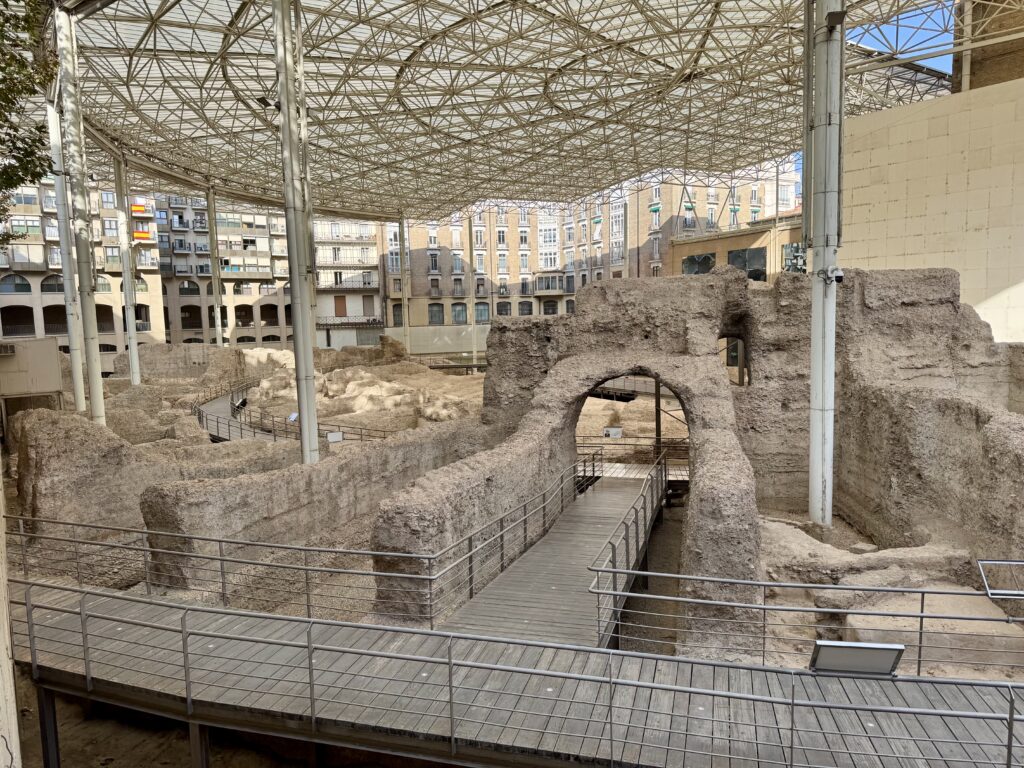
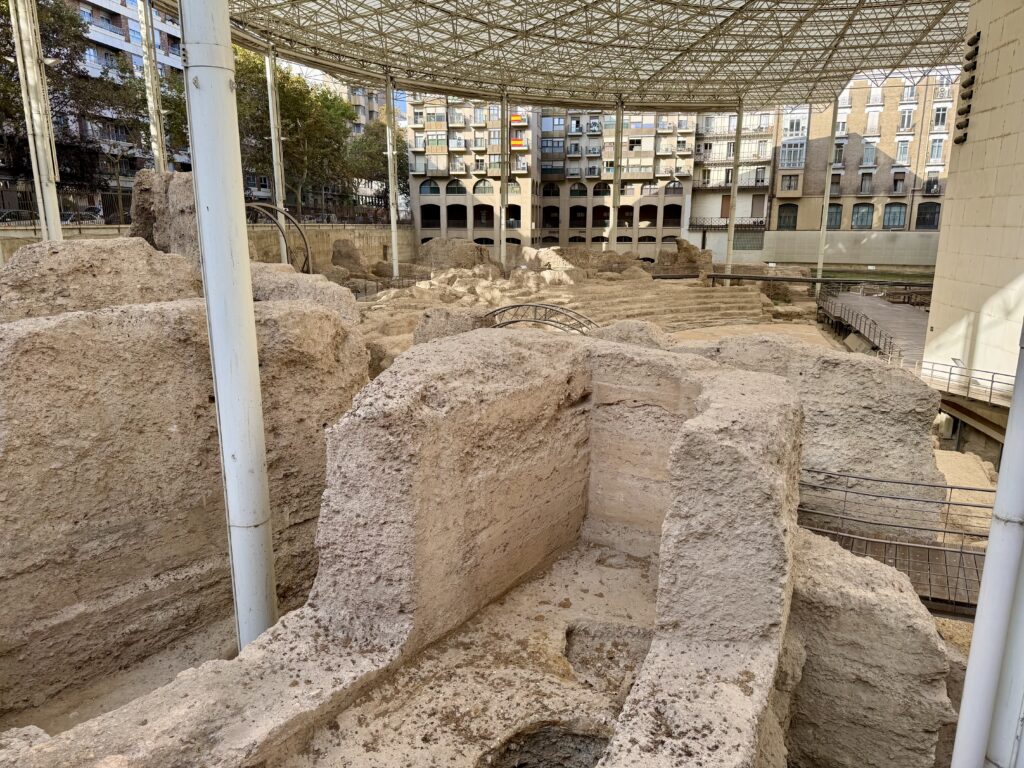
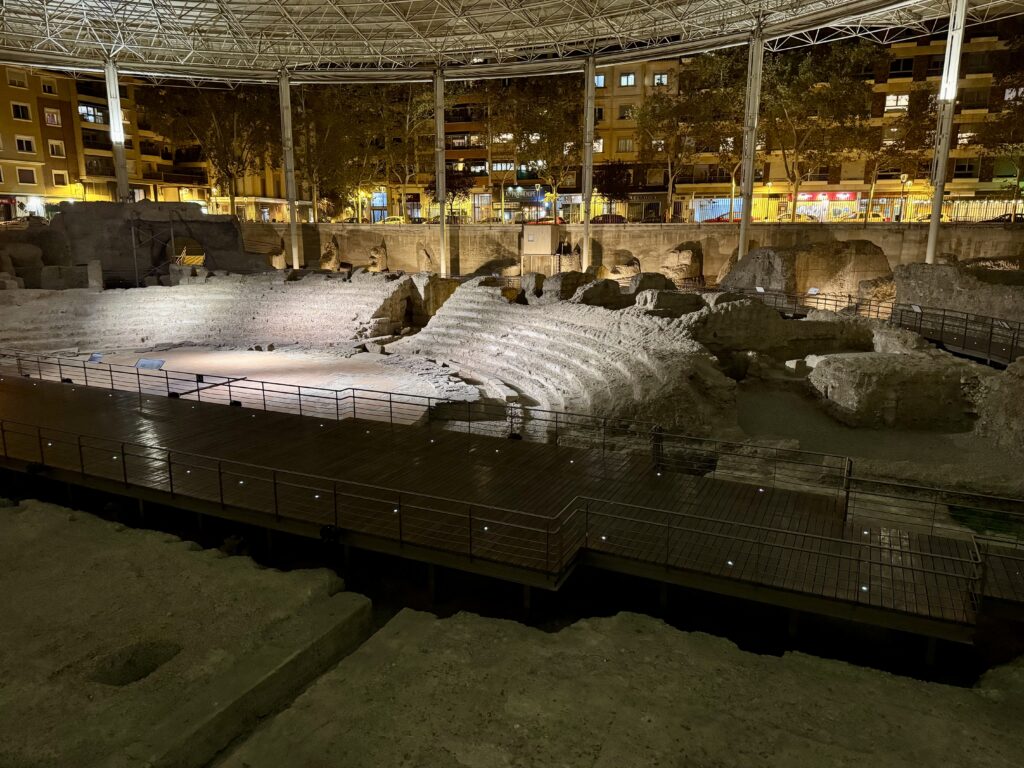
It was incredibly cool to see the shape of where the section entries once were.
Cathedral-Basilica of Our Lady of the Pillar
Along the Ebro River sits Cathedral-Basilica of Our Lady of the Pillar. The present-day Cathedral was begun in 1681 and completed in 1686.
Unfortunately the front was obscured by Christmas market preparation so it was challenging to get pictures that really showcased the gorgeous architecture. The design features eleven cupolas and four towers.
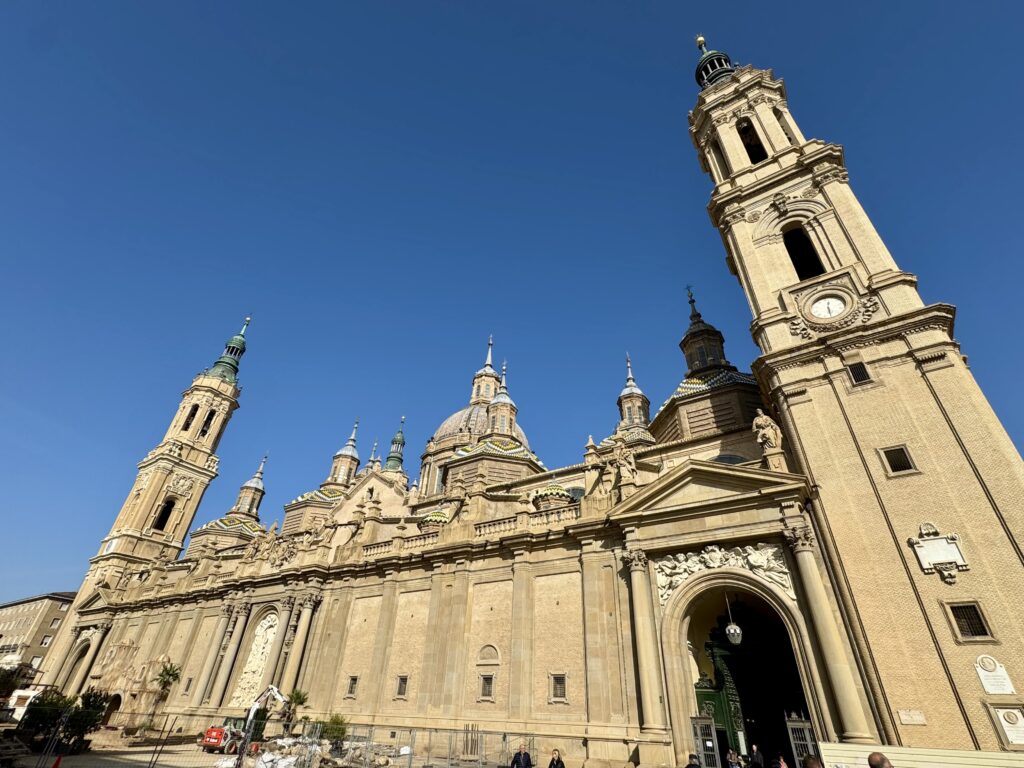
During the Spanish Civil War of 1936–1939, three bombs were dropped on the Cathedral, with two of them on display inside. Though none of the bombs exploded you can still see marks of damage, primarily in the form of bomb craters.
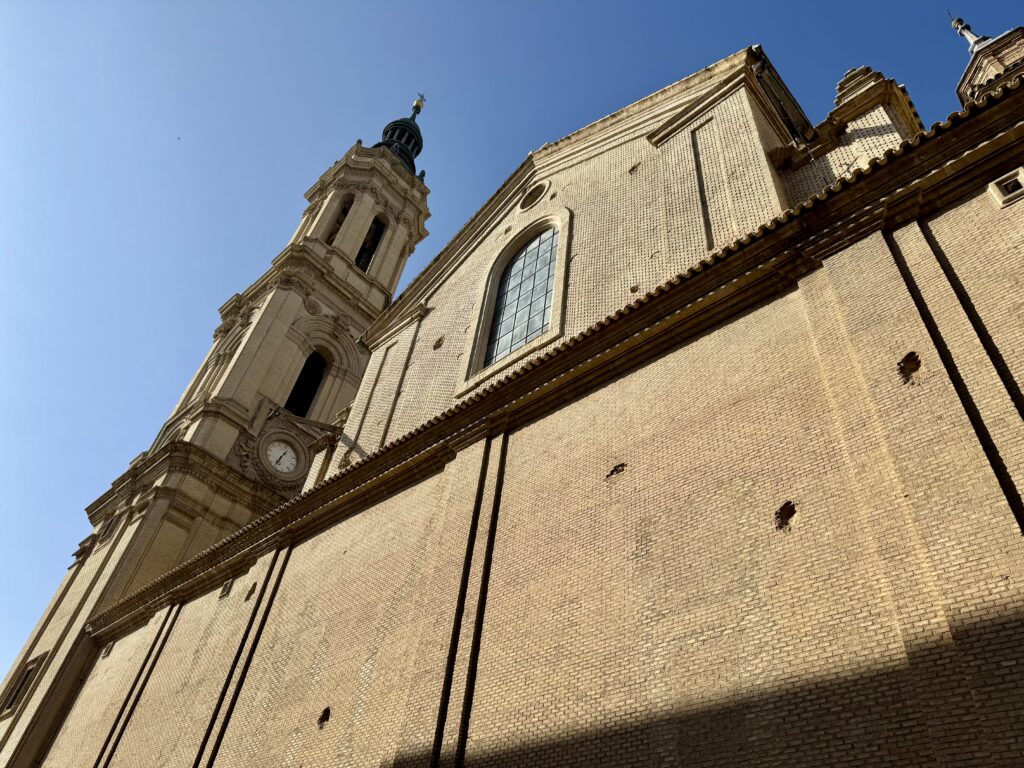
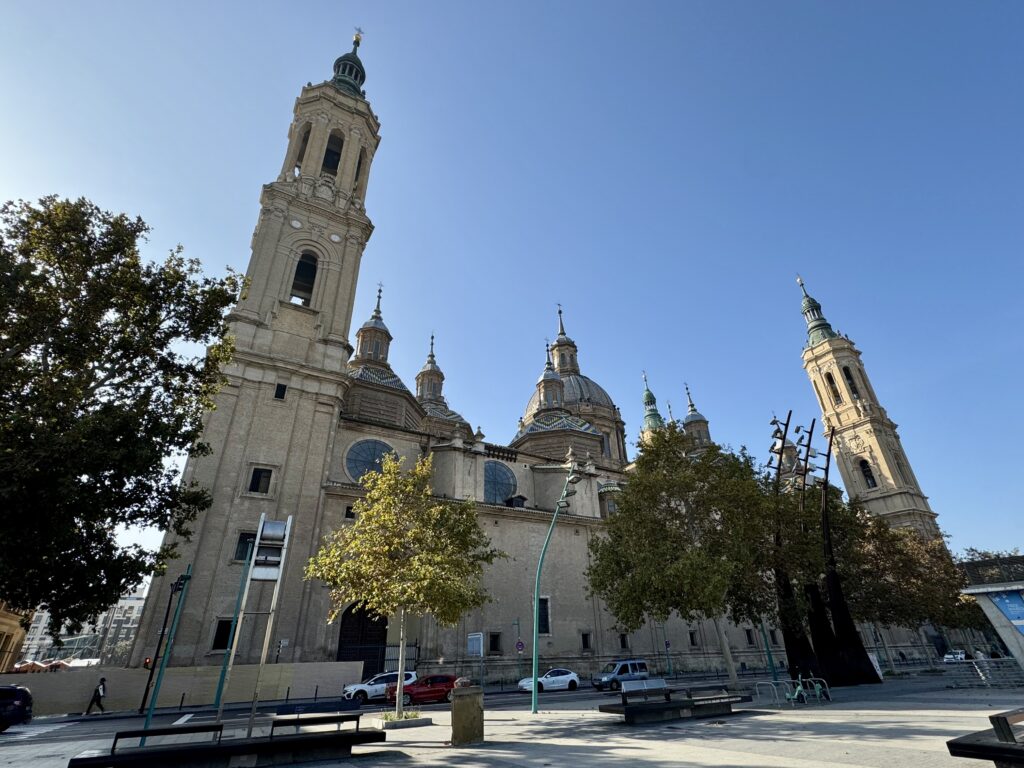
Just walking around the outside, you can get an idea of how big the Cathedral is.
Plaza de César Augusto
Around the corner from the Cathedral is Plaza de César Augusto and a statue in César Augusto’s honor.
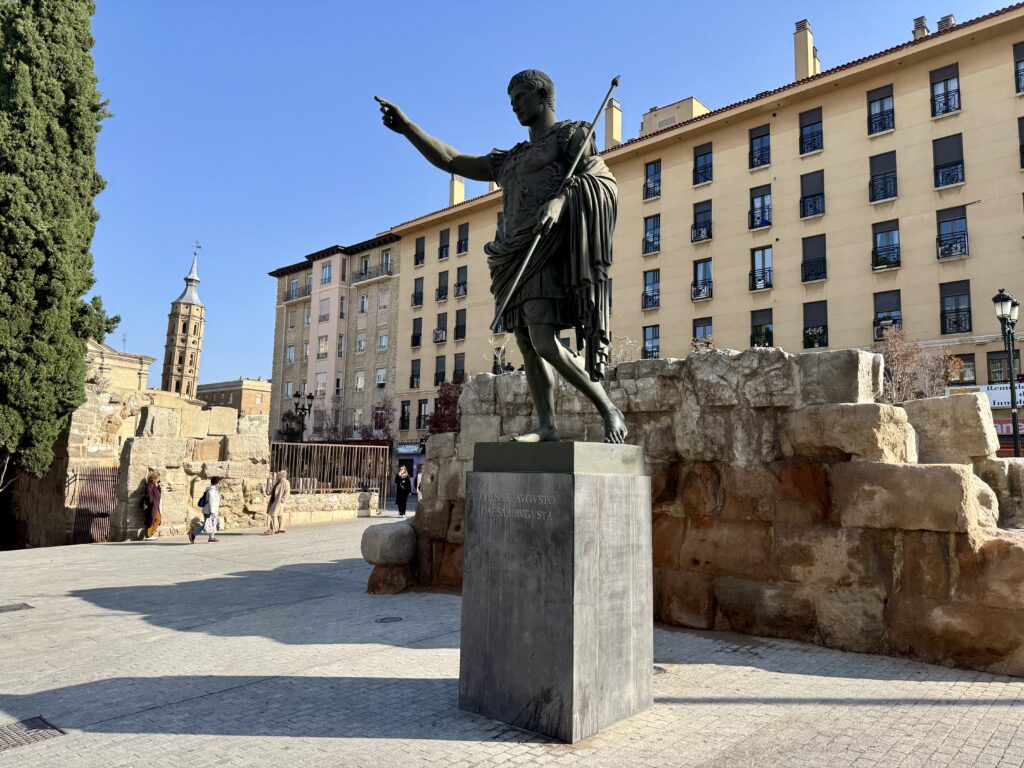
The bronze statue commemorates the Roman emperor Augustus, who founded the city of Zaragoza around 14 B.C. under the name “Caesaraugusta.” The area also features some of the city’s old Roman ruins that still stand today.
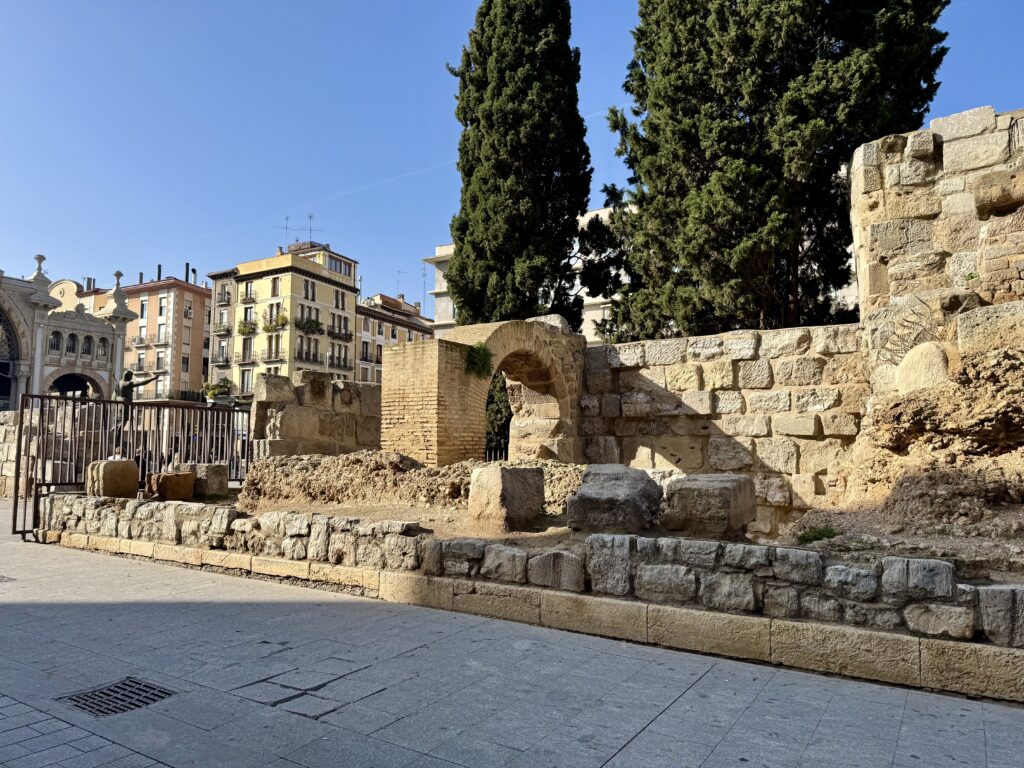
The Goya Museum
Museo Goya was originally named Museo Camón Aznar, named after the art collector who had contributed the nucleus of its collection. It was renamed in 2015 for painter and printmaker Francisco Goya. Neither Nik or I knew much about Goya, but we figured we’re probably only going to be in Zaragoza once, we might as well visit the museum. It was interesting but we kept the visit short and didn’t take any pictures. Entry was roughly $8/ticket and there are free storage lockers for your coat or bag. We’re glad we visited the museum because it was in a different part of the city that we may not have walked to otherwise.
Dining out in Zaragoza
During our short stay in Zaragza, Nik and I joked that the city should be known as the croquette capital of Spain. Just about every bar we passed or stopped at served them. We did try a few but had our fill after two days. Most everything we ate was in Barrio El Tubo, making it easy to hop from one place to the next.
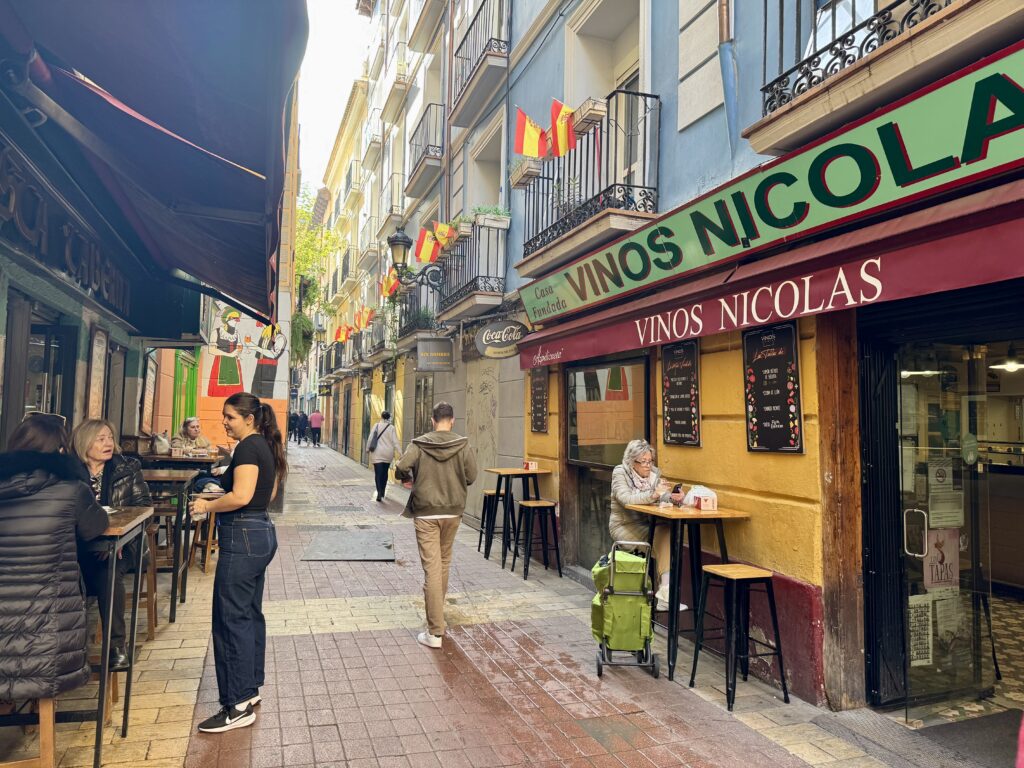
Of note, Zaragoza is a city where almost every restaurant closes in the early afternoon for a few hours, so plan ahead to find things that are open or plan on taking a nap.
La Ternasca
One of our favorite spots ended up being La Ternasca, which also happens to be a specific type of meat served in this region. La Ternasca’s version was charred and very flavorful. We almost ordered a second portion since we got the small tapa size. Keep an eye out for this spot on your visit.
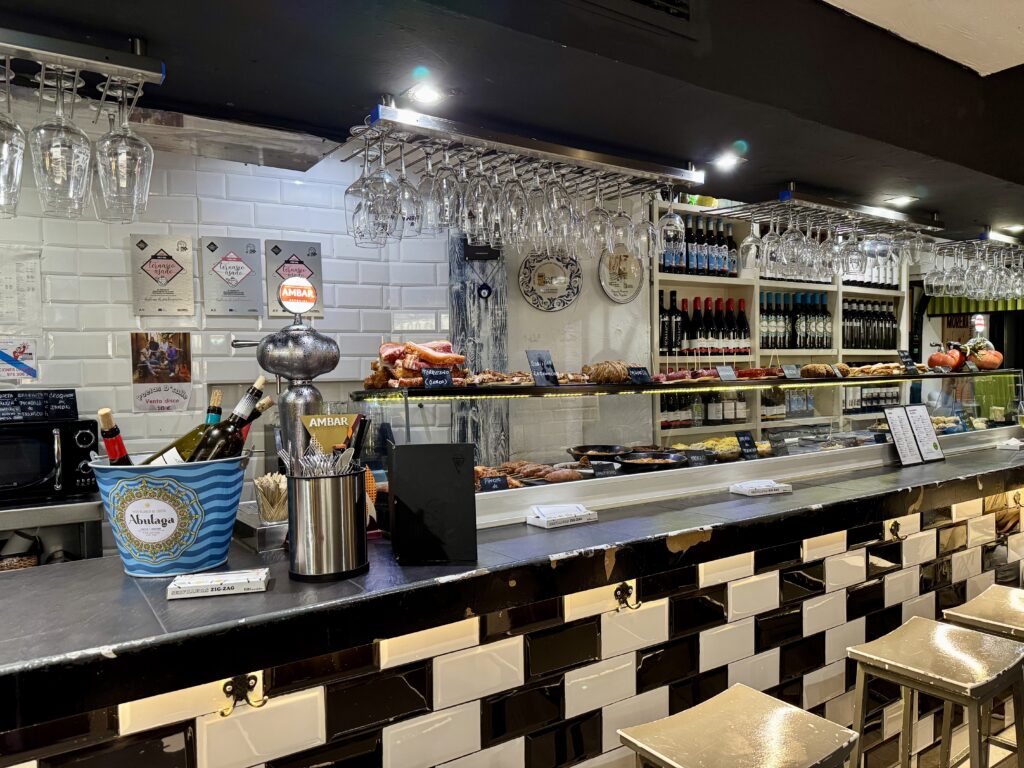
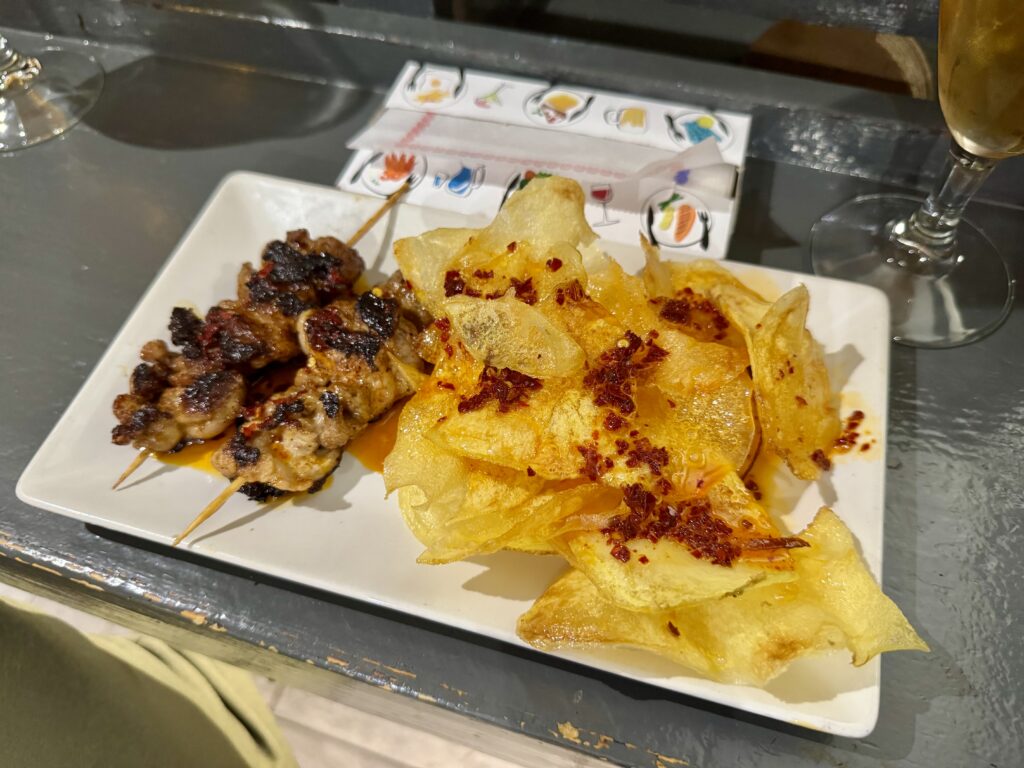
Bodegas Almau
Established in 1870, Bodegas Almau really shows its old world charm. Wooden bar accents and tiled exterior grab your attention right away. Nik and I sat outside for a round of drinks, though I think they have a beer garden space too which I bet would be fun to enjoy in the warmer months.
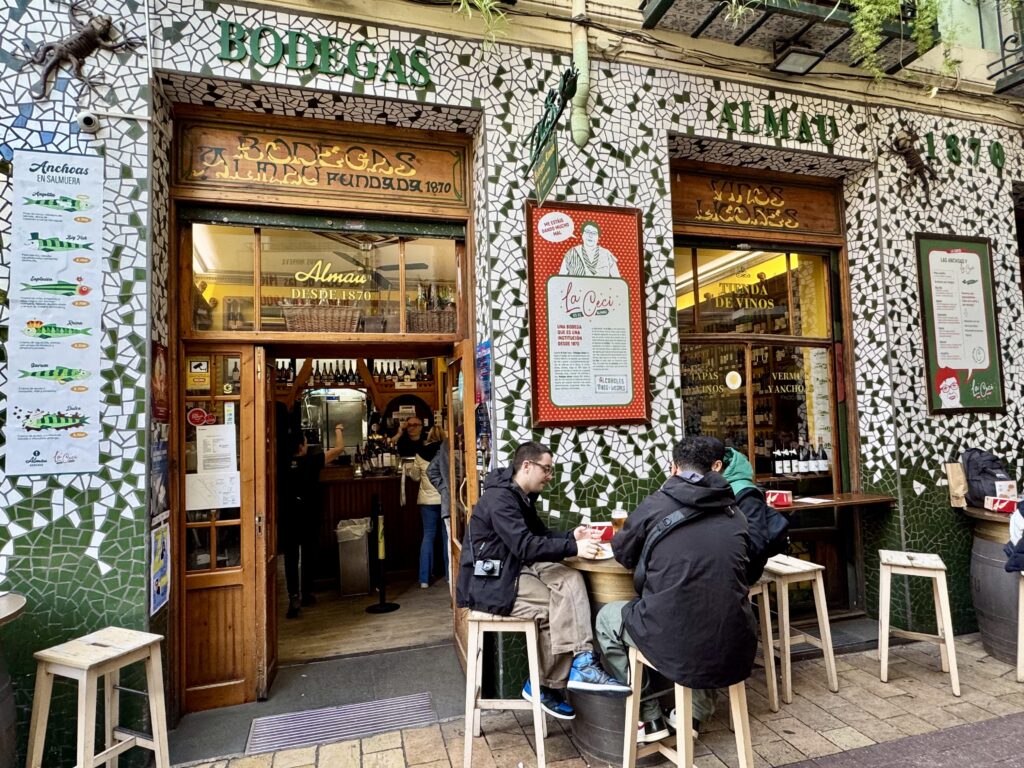
Taberna Doña Casta
In my opinion, the top spot for croquettes in Zaragoza is at Taberna Doña Casta. There were easily 10 flavors to choose from, all on display and then cooked to order.
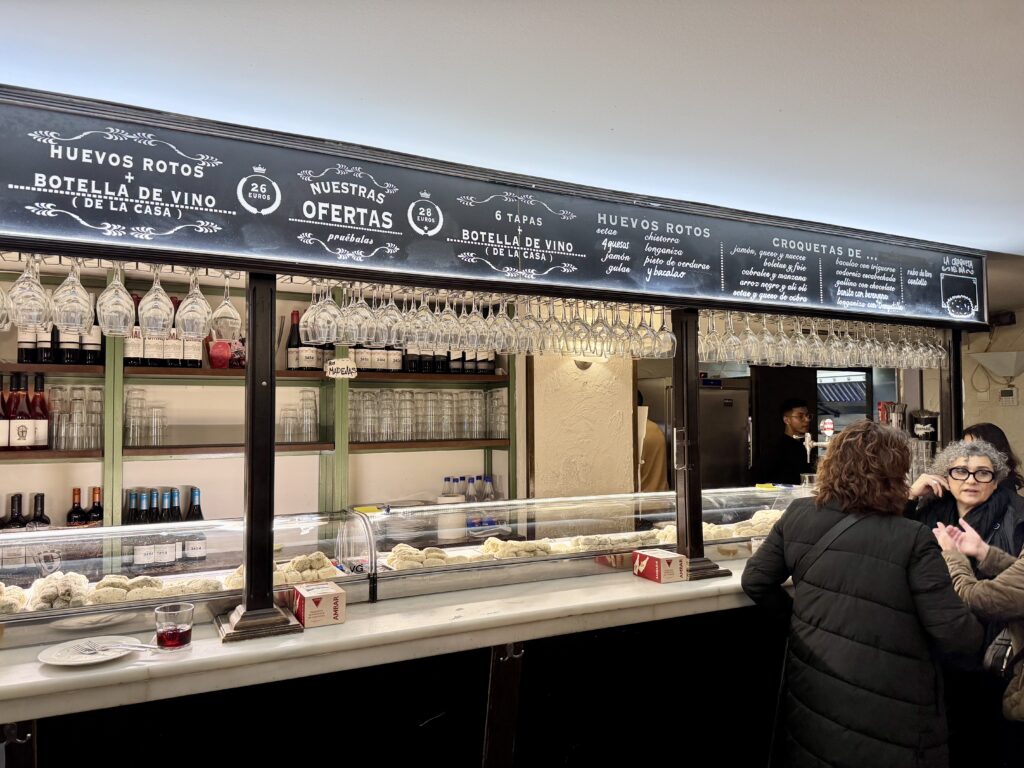
If you’re not familiar, a croquette is a fried ball, usually a type of béchamel and often with some other food or flavor mixed in. Nik and I ordered two croquettes, their jamon flavored one and a cod flavored one. The latter was quite fishy tasting but both were good.
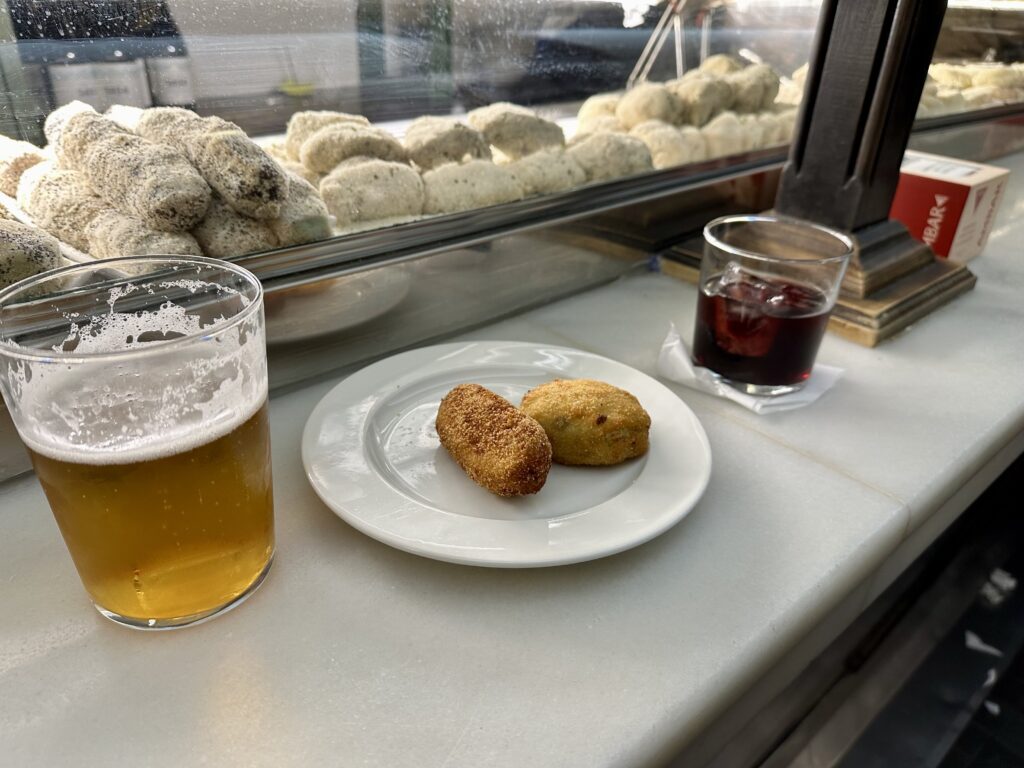
Taberna El Triana
One of the more inviting spaces in El Tubo was Taberna El Triana. They had a lot of seating and felt more welcoming because there was space to sit and enjoy our food and drink.
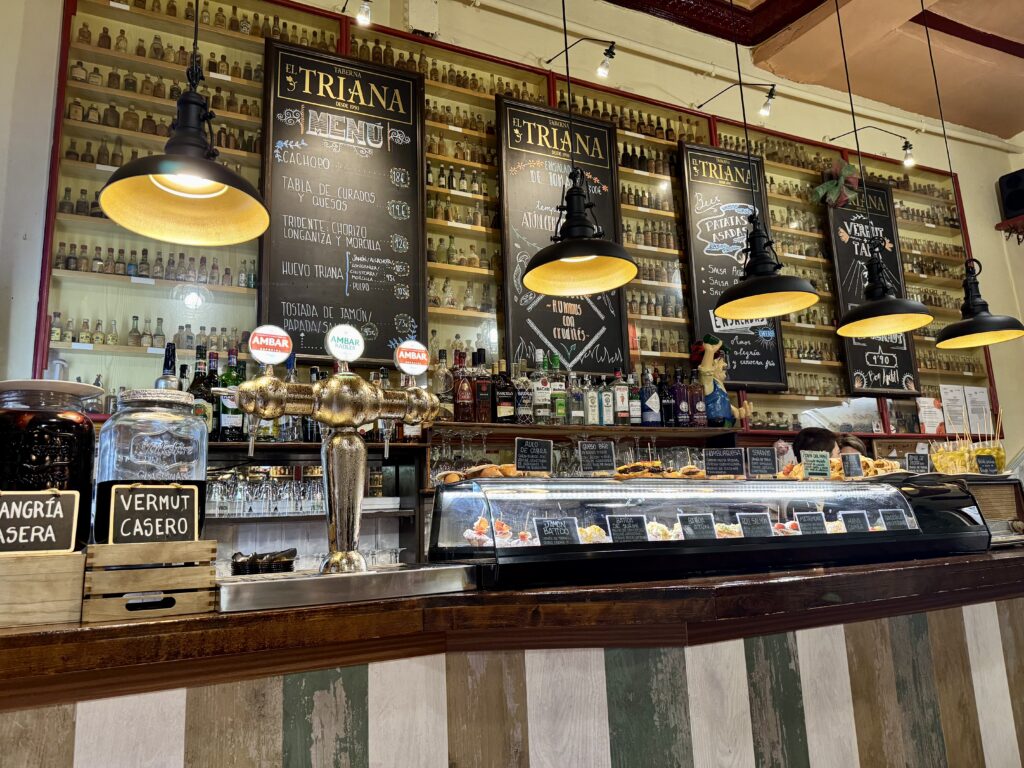
We made two visits here. The first was for a quick pintxo and the other for their huevos with jamon and vegetables.
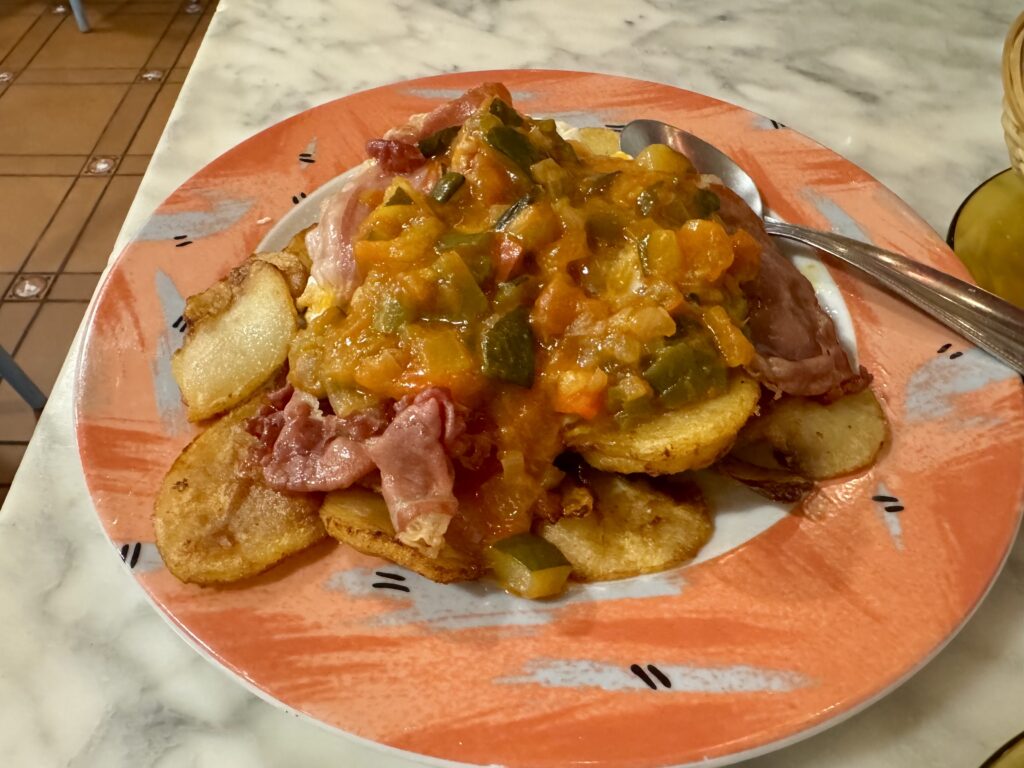
Churrería La Fama
The place for churros in Zaragoza is Churrería La Fama, a short walk from the Cathedral. Lucky for us, we got our order of churros before a large group of kids arrived.
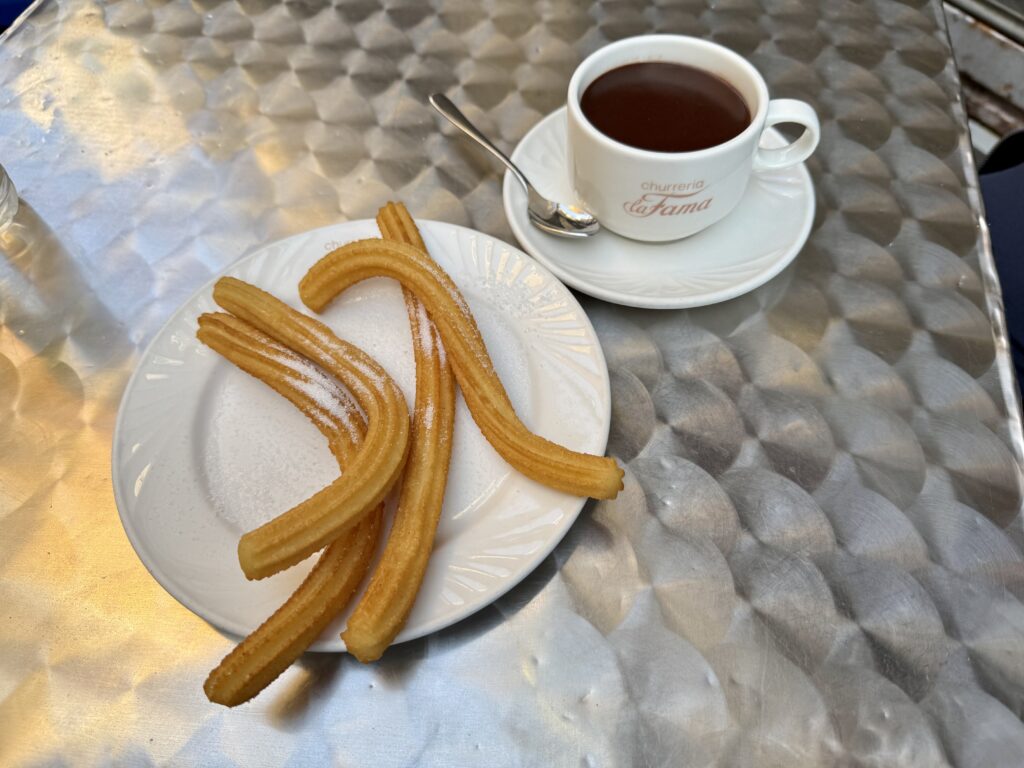
It was the perfect sweet snack!
Vinos Nicolás
Vinos Nicolás is a spot I would give a second chance to if I ever returned to Zaragoza. Their pintxos didn’t look too exciting, yet I ordered a shrimp one. We must’ve missed the lunch rush because it was pretty slow and not a lot of personality on display.
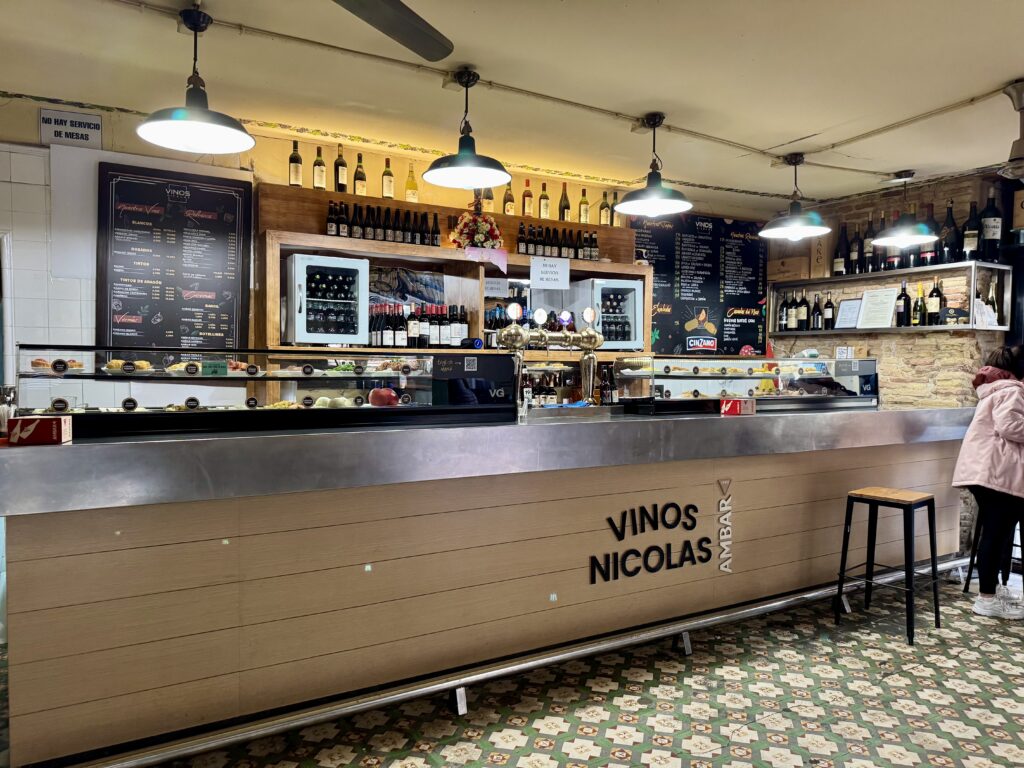
Meli Del Tubo
One spot that looked great from the outside, and even from the inside, was Meli Del Tubo. The menu seemed to offer a variety of upscale tapas. We ordered a mix of things: a ramen croquette, t-bone steak tapa, meli-meatballs (one each of ox, chicken and pork) and one “chupa-chup” which was basically a lamb and goat cheese croquette.
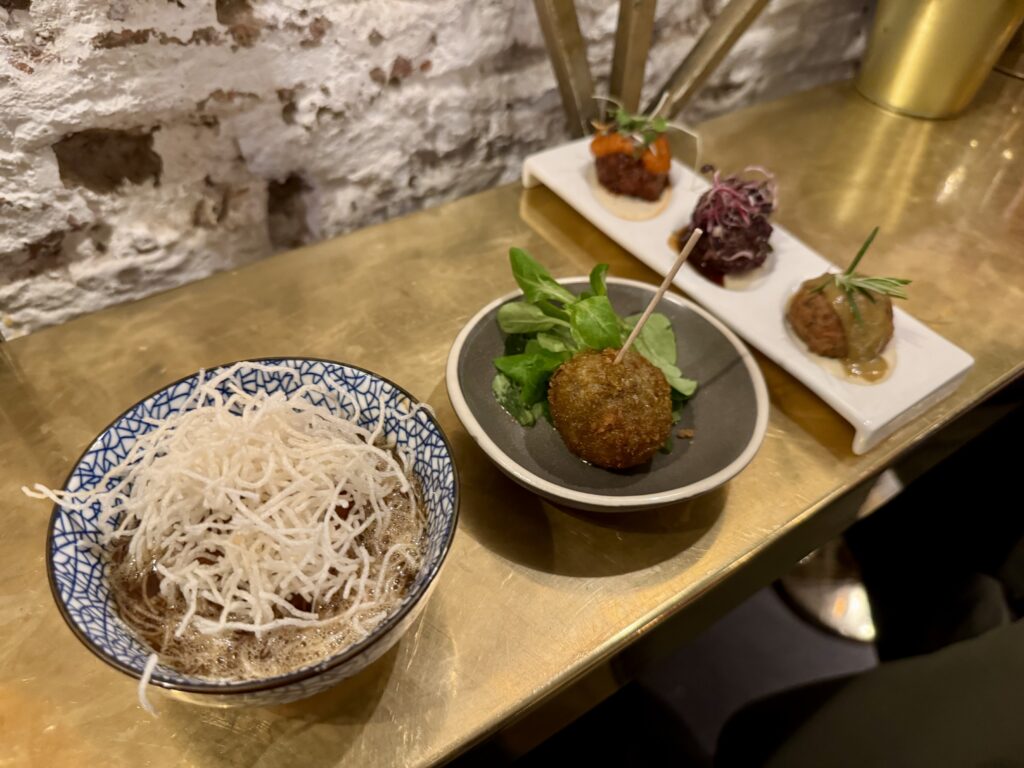
The ramen croquette was really unique and delicious. A croquette in broth and topped with fried rice noodles.
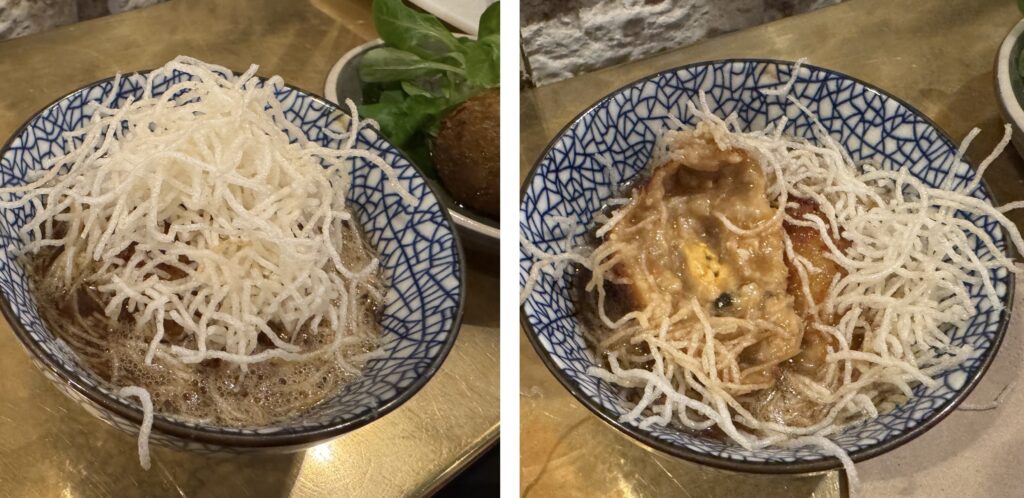
The t-bone was delicious but we could’ve passed on the meatballs and lamb croquette. Both were really disappointing and we didn’t finish them, even though they were small and bite-sized.
Craft Beer in Zaragoza
Cierzo Brewing Co. is Zaragoza’s main craft beer brand in the region but their taproom is permanently closed. Fortunately, the city has two pretty good beer bar alternatives!
Hoppy
In El Tubo is Hoppy, Craft Beer House that we stopped in on both nights while visiting Zaragoza. They had a TV and even put on a soccer game for us. The beers were good and they also serve food, though we didn’t eat there. Definitely stop in and enjoy a cold one on your visit.
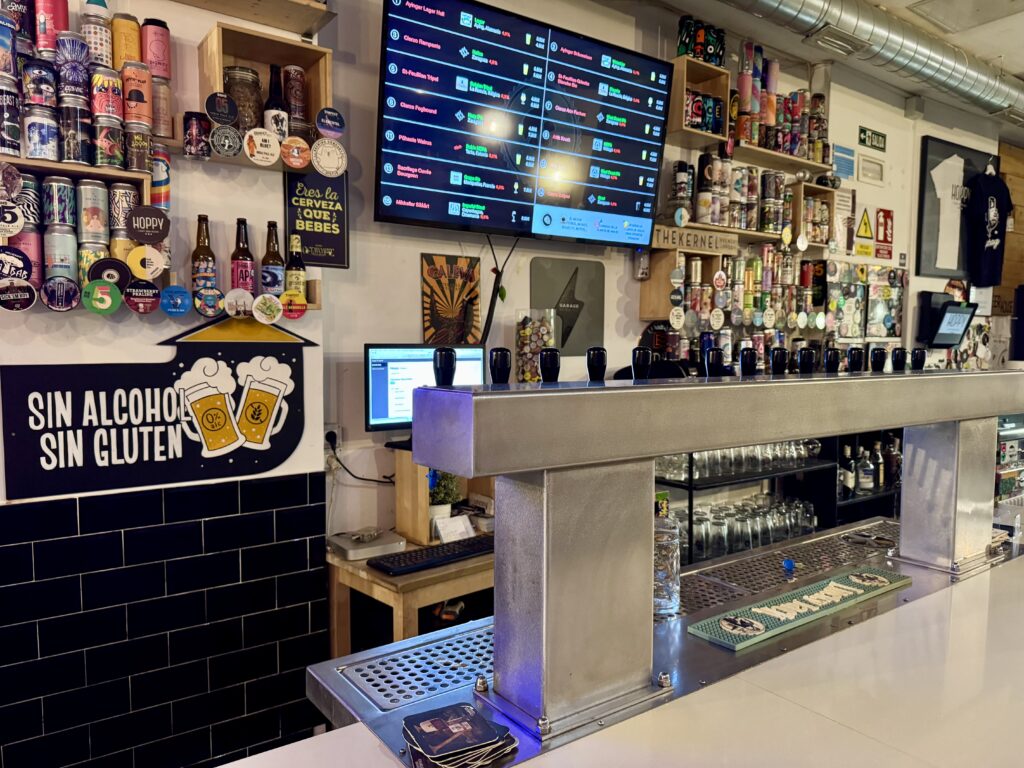
Beer Corner
In another neighborhood, not far from El Tubo, is Beer Corner. We got there a little before they closed the for night and regretfully didn’t take any pictures. We enjoyed a couple beers and a snack of chicken fingers.
Next Stop: Canfranc Estación
After two nights visiting Zaragoza, we made our way to the train station for the trip to Canfranc Estación. We picked up some sandwiches for the train ride and they were perfect. Stay tuned for more on that trip in an upcoming blog post!
As for Zaragoza, have you been? What did we miss?
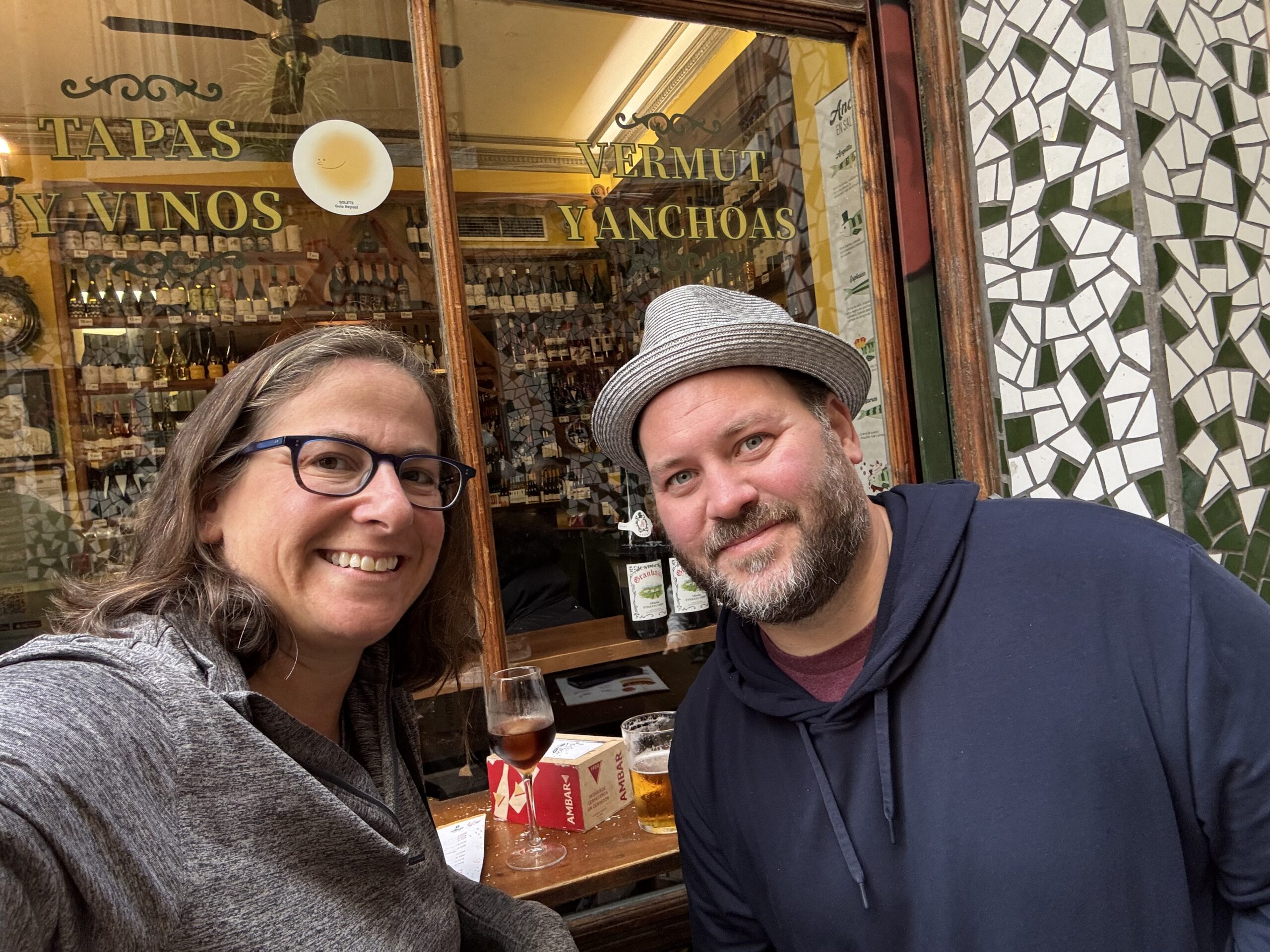
You 2 are living my fantasy. I am so happy you are able to have this experience of a lifetime. I’m anxious to hear what Koval the dog has to say about his experience.